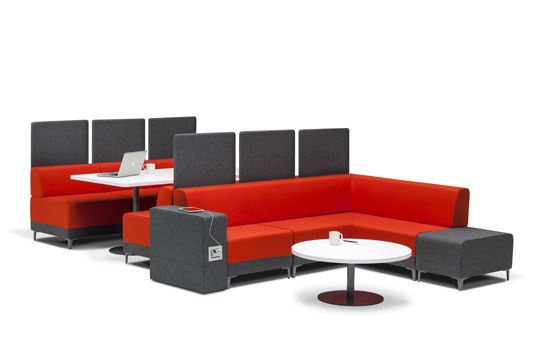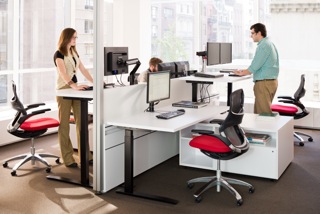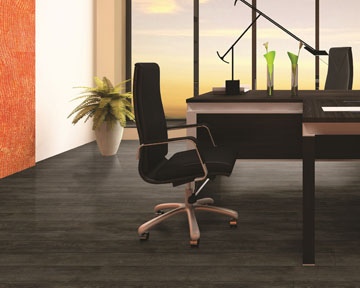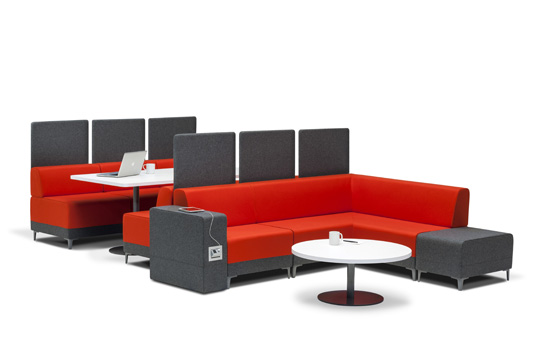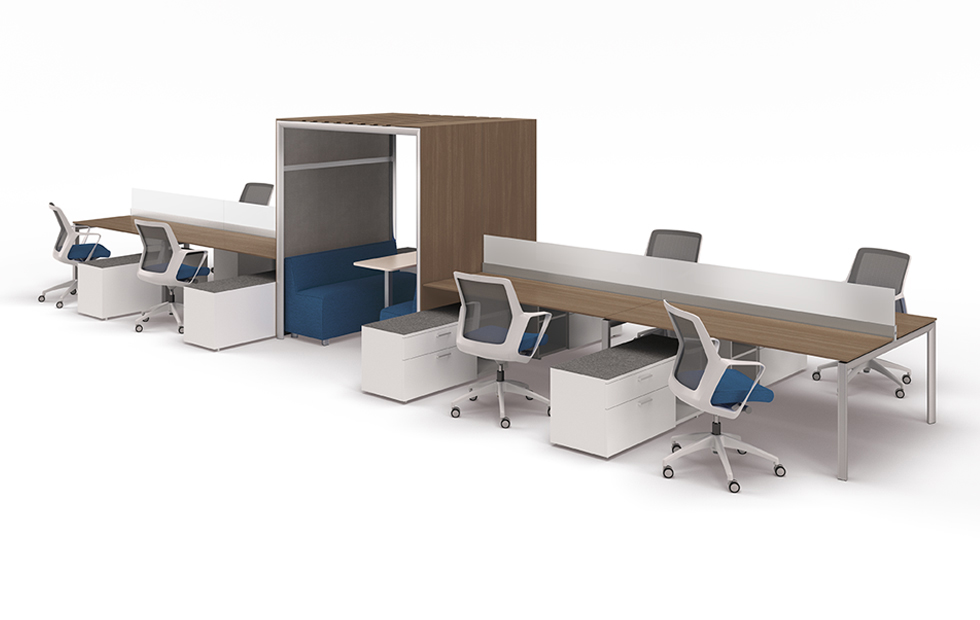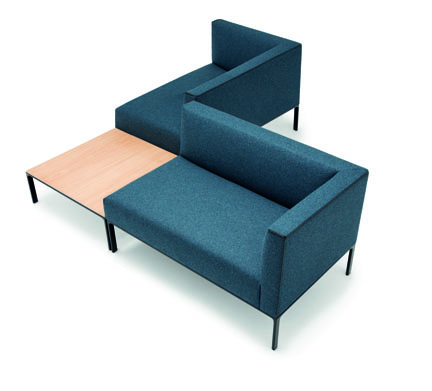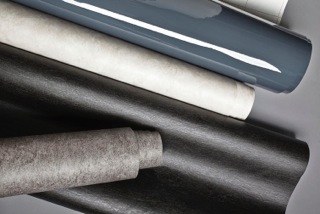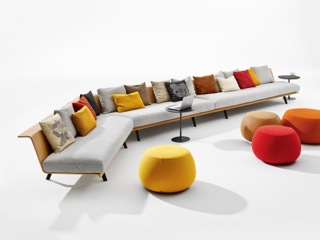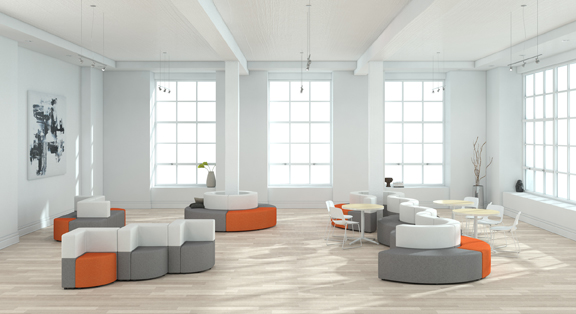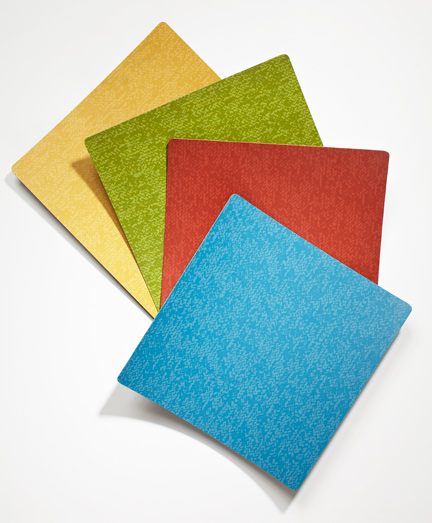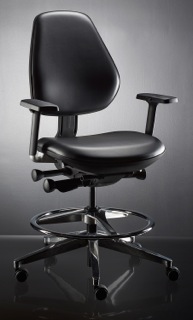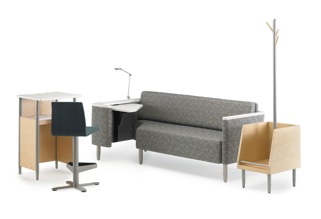In order to set the stage for this year’s NeoCon, show management tapped its advisory committee of top commercial design firms to share their insight on what’s hot right now and what lies ahead across key vertical sectors.
Leaders at Gensler, FXFOWLE, HOK, and Mancini Duffy weighed in on trends and corresponding product picks. Here are their top interior design trends:
Office/Corporate Design
Health & Wellness and Technology Are Key Features in the Office
“Finally, Baby Boomers and Millennials have found a passionate meeting of the minds on a topic that is also very personal: health and wellness,” says Workplace Strategist Priyanka Agrawala of New York-based design firm Mancini Duffy. “Convergence on this topic is also perhaps why organizations trying to attract new talent, retain experienced staff, encourage knowledge transfer, and increase productivity and engagement, think that investing in this area is a no-brainer.
The A&D industry is gearing up to help support this new business initiative, which also aligns with more established sustainable design practices. Green design and LEED principles have always passively contributed to wellness by creating good indoor air quality. Now we’re seeing circadian lighting; sit-stand desks; ergonomic lounge seating that also accommodates mobile technology; biophillic design elements like “live walls” and plants and gardens that bring the outdoors inside added to the mix, in addition to more active design concepts."
Active design principles that promote wellness include diverse work settings that not only support different work styles, but also encourage people to get up from their seats and move. As mobility within the office increases, so does the demand for 'plug and play' solutions that include collaborative spaces as well as individual desks and seating with built-in charging stations, stashable storage for technology, foldable tablet arms and side tables, and mobile marker/technology boards.”
Sarah Gerber, Senior Designer, Associate, FXFOWLE, elaborates on the changing corporate design landscape, noting, “Technology is having an enormous impact on furniture design, especially through ergonomics. The trend is not necessarily about incorporating technology, but responding to how we position ourselves when we use these technologies.
In addition, the ‘performative’ workplace is becoming a balanced workplace as organizations seek to find the right proportion of interactive and focused work. The future of the workplace is not a “one size fits all” approach; rather, it’s an innovative response to the growing amount of data at our disposal.”
Hospitality
Moving Toward More Flexible & Authentic Experiences
“Authenticity is fast becoming another overarching trend for all demographics," adds Monk. “Consistency in appearance and experience used to be the most important quality for hotel chains to convey. The idea was that wherever you went, a name brand looked and felt the same so guests could take comfort in the familiar.
These days, with technology and the Internet giving us access to an array of information, imagery and virtual experiences, travelers want to authentically experience the culture of the locale in which they are staying. Firms have responded to this desire by focusing on brand and property distinction while creating more unique experiences and products that tap into local flavors.”
Healthcare
Healthcare Sector Reacts To New Health Laws In Project & Product Design
Tama Duffy Day, Health & Wellness Director of Gensler, remarks, “As eight million new Affordable Care Act (ACA) enrollees have access to healthcare, the industry is responding by providing expanded and new ways of receiving care. Health systems are increasing their coverage and new players are moving the industry toward retail health.
Designers are shaping these clinical experiences in every way—from brand recognition and consumer-driven first-impression appeal, to efficient clinical floor plans in support of increasing the patient and provider interactions. Given this significant and fast-moving change in the industry, products need to keep up with the demand—for example, mobile small-scale technology carts, exam tables that can also be a chair, technology integrated into white boards, and spaces that can be used for telemedicine.”
With the Affordable Care Act placing more emphasis on the effectiveness of patient care and experience, the traditional model of hospital design is being rethought and reimagined by healthcare designers across the board—from architects and interior designers to product and equipment designers, and service and UX designers.
This renewed focus on human-centric outcomes for end users—the patients and their individual needs as well as the healthcare professionals that work in these environments every day—is bringing about a shift in scale from large-umbrella hospital campuses that house every type of care, to individual clinics and ambulatory care facilities.
Meanwhile, patient surveys indicate the desire for medical environments that are less sterile and “clinical” and more like a home. Designers are responding with solutions to improve experiential and usability factors for patients and their caregivers. These include decreasing noise and increasing privacy, providing more natural light, improving the accessibility, movement and ergonomics of furniture and equipment, enabling multitasking, and creating surfaces that are easier to clean.
Related Stories
AEC Tech | Oct 16, 2024
How AI can augment the design visualization process
Blog author Tim Beecken, AIA, uses the design of an airport as a case-study for AI’s potential in design visualizations.
Airports | Aug 22, 2024
Portland opens $2 billion mass timber expansion and renovation to its international airport
This month, the Portland International Airport (PDX) main terminal expansion opened to passengers. Designed by ZGF for the Port of Portland, the 1 million-sf project doubles the capacity of PDX and enables the airport to welcome 35 million passengers per year by 2045.
Smart Buildings | Jul 25, 2024
A Swiss startup devises an intelligent photovoltaic façade that tracks and moves with the sun
Zurich Soft Robotics says Solskin can reduce building energy consumption by up to 80% while producing up to 40% more electricity than comparable façade systems.
Great Solutions | Jul 23, 2024
41 Great Solutions for architects, engineers, and contractors
AI ChatBots, ambient computing, floating MRIs, low-carbon cement, sunshine on demand, next-generation top-down construction. These and 35 other innovations make up our 2024 Great Solutions Report, which highlights fresh ideas and innovations from leading architecture, engineering, and construction firms.
Airports | Jun 3, 2024
SOM unveils ‘branching’ structural design for new Satellite Concourse 1 at O’Hare Airport
The Chicago Department of Aviation has revealed the design for Satellite Concourse 1 at O’Hare International Airport, one of the nation’s business airports. Designed by Skidmore, Owings & Merrill (SOM), with Ross Barney Architects, Juan Gabriel Moreno Architects (JGMA), and Arup, the concourse will be the first new building in the Terminal Area Program, the largest concourse area expansion and revitalization in the airport’s almost seven-decade history.
Products and Materials | May 31, 2024
Top building products for May 2024
BD+C Editors break down May's top 15 building products, from Durat and CaraGreen's Durat Plus to Zurn Siphonic Roof Drains.
Biophilic Design | May 6, 2024
The benefits of biophilic design in the built environment
Biophilic design in the built environment supports the health and wellbeing of individuals, as they spend most of their time indoors.
Architects | May 2, 2024
Emerging considerations in inclusive design
Design elements that consider a diverse population of users make lives better. When it comes to wayfinding, some factors will remain consistent—including accessibility and legibility.
Airports | Apr 18, 2024
The next destination: Passive design airports
Today, we can design airports that are climate resilient, durable, long-lasting, and healthy for occupants—we can design airports using Passive House standards.
Airports | Feb 13, 2024
New airport terminal by KPF aims to slash curb-to-gate walking time for passengers
The new Terminal A at Zayed International Airport in the United Arab Emirates features an efficient X-shape design with an average curb-to-gate walking time of just 12 minutes. The airport terminal was designed by Kohn Pedersen Fox (KPF), with Arup and Naco as engineering leads.


